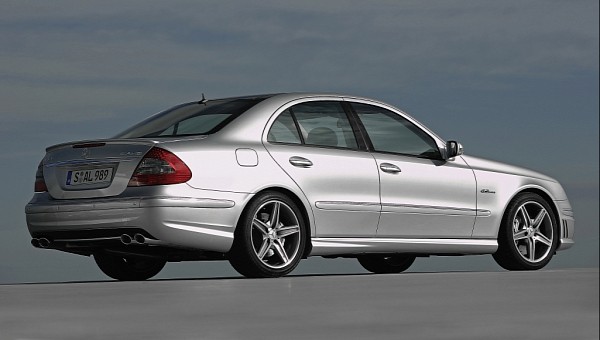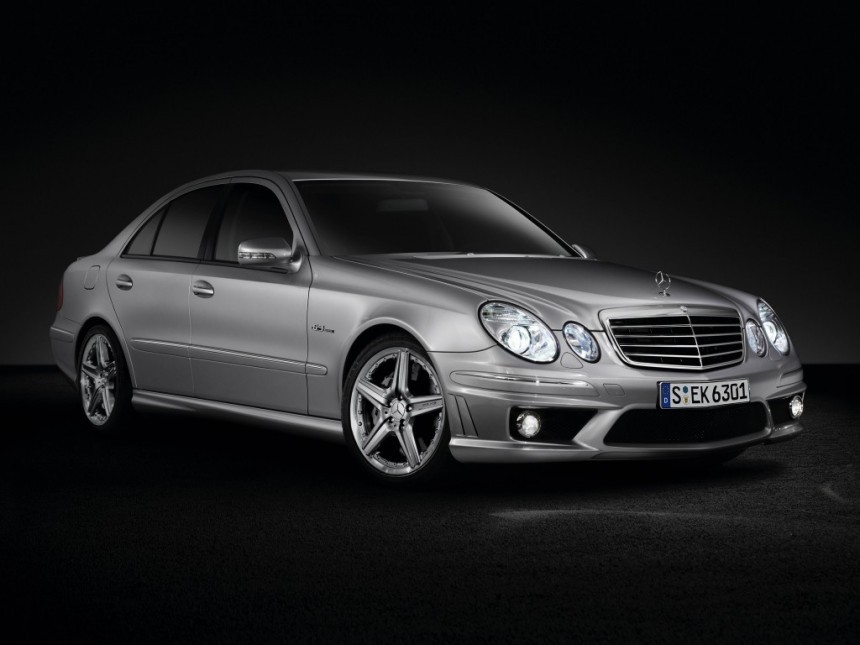Once the most quality-focused automaker in the luxury segment, Mercedes-Benz couldn’t be more different in 2022. Over in the United States, for example, the Three-Pointed Star ends this year with 34 recalls under its belt, amounting to nearly 1,100,000 vehicles, both old and new.
The final recall for 2022 has just been published on the National Highway Traffic Safety Administration’s website, and even though M-B isn't to blame for it, it still is quite a biggie. Just under 124,000 examples of the 2001 to 2011 C-Class, CLK, E-Class, and CLS are called back due to detaching glass sunroof panels. As implied by the main photo, AMGs ranging from the 32 to the 63 series are also affected.
The chronology document filed with the federal watchdog lists December 2017 as the start of Mercedes’ initial investigations into this concern. At that time, a handful of field reports from outside the United States market prompted the Stuttgart-based outfit to look into the aforementioned issue.
The sliding roof assemblies of said vehicles were returned for in-depth analysis by the supplier and an outside laboratory, but as fate would have it, the analyses were inconclusive. Given this conclusion, and because the suspect assemblies were out of production, M-B decided to source vehicles from the used market to carry out further investigations. It took the luxury automaker until November 2018 to finish said investigations.
Of the three sliding roofs analyzed, two didn’t indicate any issues. The last one exhibited impaired bonding. This, in turn, prompted a thorough review of the supplier’s production records to determine if Webasto Roof & Components SE made any changes during the course of production.
Come May 2019, the aforementioned supplier was found to have changed the process of primer application several times over the course of the production period. Webasto had even changed the drying time for the bonding agent, failing to inform Mercedes-Benz of these changes. M-B conducted a number of tests to determine the impact of a reduced drying time on the bonding performance over time. Not surprising anyone, less drying time was found to worsen the bonding performance over time.
Fast forward to November 2019, and Mercedes-Benz determined that Webasto had reduced the drying time of the primer from more than five minutes to only two minutes during a specific production period. Adding insult to injury, assemblies produced during said period were also supplied as spare parts. Since the document retention requirements of the workshop repair orders are limited to 10 years, it wasn’t possible to link the spare parts affected by this concern to customer vehicles. Better late than never, a 745,000-vehicle safety recall was finally issued in December 2019.
Over the course of the year 2020, additional examples of damaged parts which fell outside of the original recall scope were returned from the field for examination. In other words, M-B didn’t properly investigate its supplier. The subsequent investigation revealed that Webasto didn’t utilize the proper bonding process for these additional parts, and that the production range indicated by the supplier needed to be expanded. As a result, yet another safety recall was announced in March 2021. On that occasion, the German automaker called back just over 15,000 vehicles.
But guess what? Mercedes-Benz wouldn’t stop investigating this concern after the second recall either. This diligence paid off, with Mercedes-Benz discovering partially loose sunroofs manufactured outside of the production periods of prior recalls. These partially loose sunroofs were manufactured during a period when the supplier had used a five-minute primer drying time, which is why the issue couldn’t be solely attributed to the primer’s drying time. As expected, further investigations ensued.
It took the German automaker until September 2022 to identify a combination of factors as the underlying cause of the loose or detaching sunroofs. The factors in question are improper temperatures and humidity during primer ventilation. Mercedes-Benz isn’t aware of any field reports in the U.S. market, but it still has to recall nearly 124,000 vehicles due to the supplier’s negligence in producing the suspect sunroof assemblies.
Dealers will begin 2023 with a communication from Mercedes-Benz USA on January 3rd. Owners, on the other hand, will be informed by first-class mail before February 21st, according to the recall report below.
The chronology document filed with the federal watchdog lists December 2017 as the start of Mercedes’ initial investigations into this concern. At that time, a handful of field reports from outside the United States market prompted the Stuttgart-based outfit to look into the aforementioned issue.
The sliding roof assemblies of said vehicles were returned for in-depth analysis by the supplier and an outside laboratory, but as fate would have it, the analyses were inconclusive. Given this conclusion, and because the suspect assemblies were out of production, M-B decided to source vehicles from the used market to carry out further investigations. It took the luxury automaker until November 2018 to finish said investigations.
Of the three sliding roofs analyzed, two didn’t indicate any issues. The last one exhibited impaired bonding. This, in turn, prompted a thorough review of the supplier’s production records to determine if Webasto Roof & Components SE made any changes during the course of production.
Come May 2019, the aforementioned supplier was found to have changed the process of primer application several times over the course of the production period. Webasto had even changed the drying time for the bonding agent, failing to inform Mercedes-Benz of these changes. M-B conducted a number of tests to determine the impact of a reduced drying time on the bonding performance over time. Not surprising anyone, less drying time was found to worsen the bonding performance over time.
Over the course of the year 2020, additional examples of damaged parts which fell outside of the original recall scope were returned from the field for examination. In other words, M-B didn’t properly investigate its supplier. The subsequent investigation revealed that Webasto didn’t utilize the proper bonding process for these additional parts, and that the production range indicated by the supplier needed to be expanded. As a result, yet another safety recall was announced in March 2021. On that occasion, the German automaker called back just over 15,000 vehicles.
But guess what? Mercedes-Benz wouldn’t stop investigating this concern after the second recall either. This diligence paid off, with Mercedes-Benz discovering partially loose sunroofs manufactured outside of the production periods of prior recalls. These partially loose sunroofs were manufactured during a period when the supplier had used a five-minute primer drying time, which is why the issue couldn’t be solely attributed to the primer’s drying time. As expected, further investigations ensued.
It took the German automaker until September 2022 to identify a combination of factors as the underlying cause of the loose or detaching sunroofs. The factors in question are improper temperatures and humidity during primer ventilation. Mercedes-Benz isn’t aware of any field reports in the U.S. market, but it still has to recall nearly 124,000 vehicles due to the supplier’s negligence in producing the suspect sunroof assemblies.
Dealers will begin 2023 with a communication from Mercedes-Benz USA on January 3rd. Owners, on the other hand, will be informed by first-class mail before February 21st, according to the recall report below.








